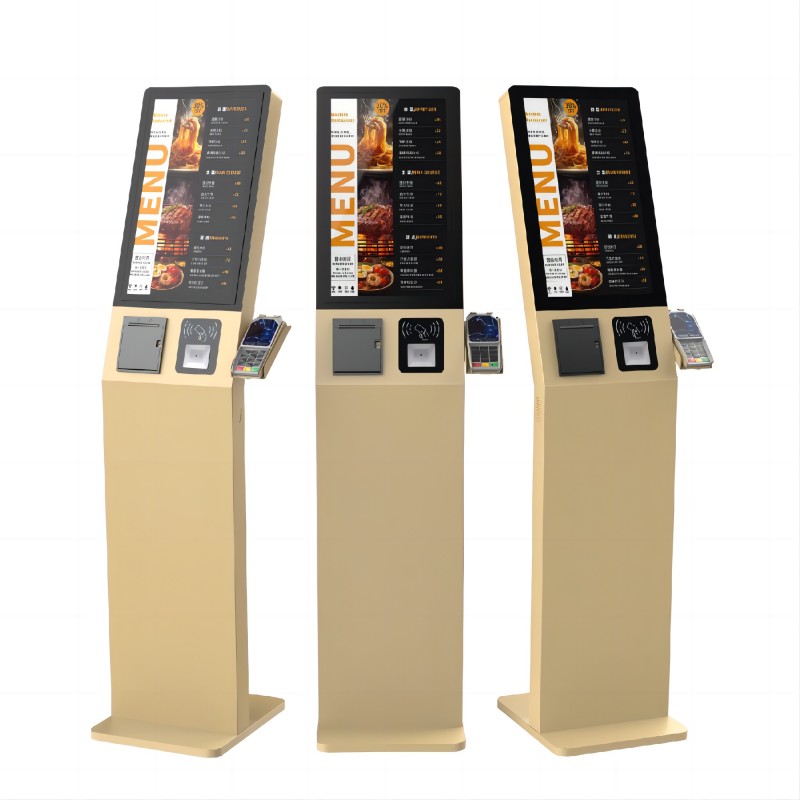
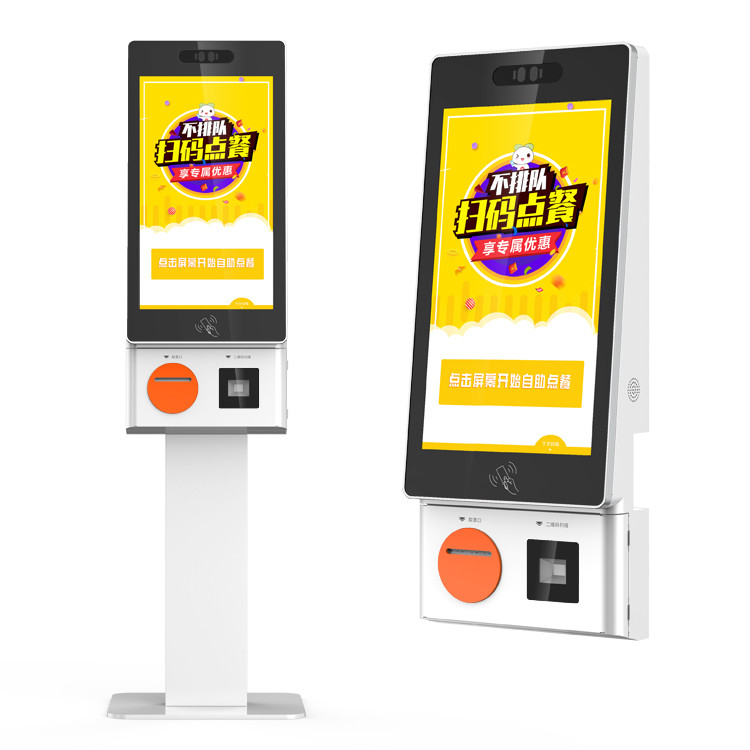
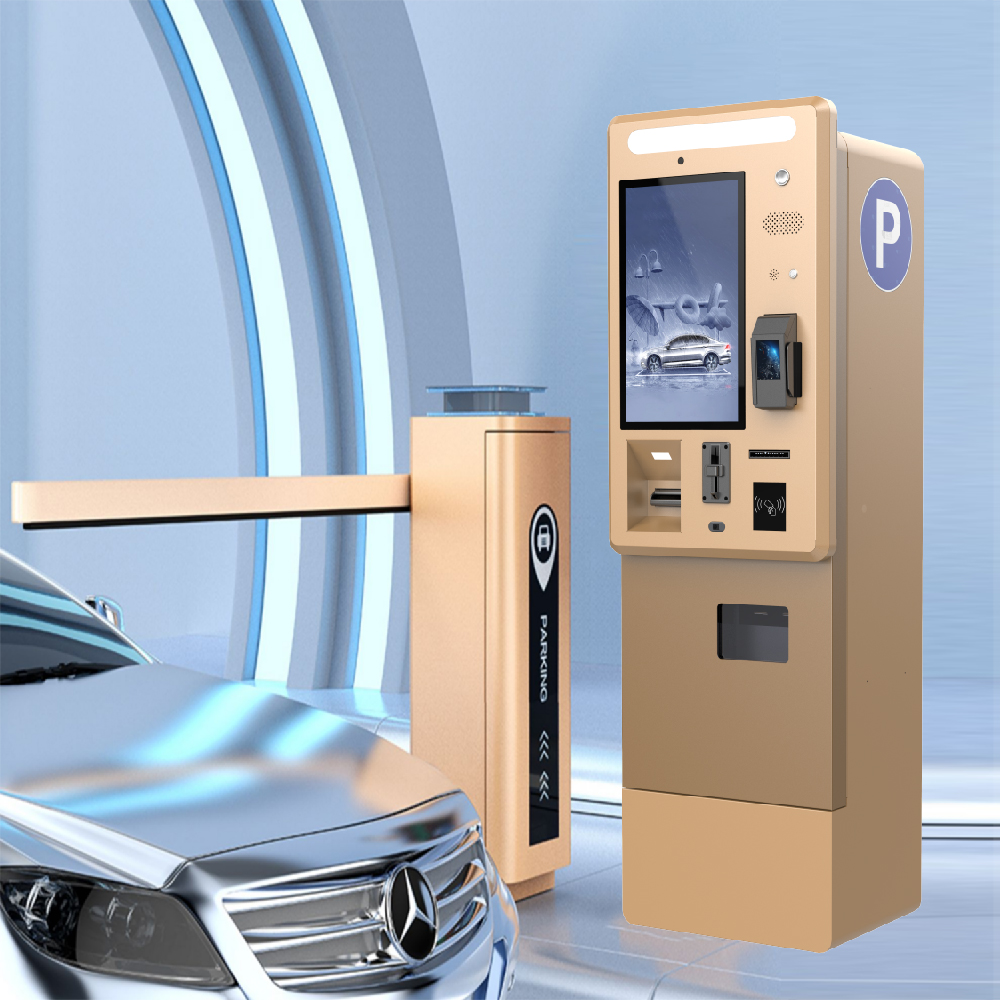
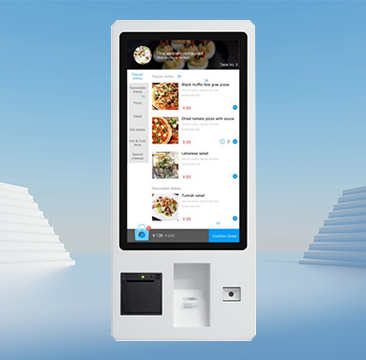
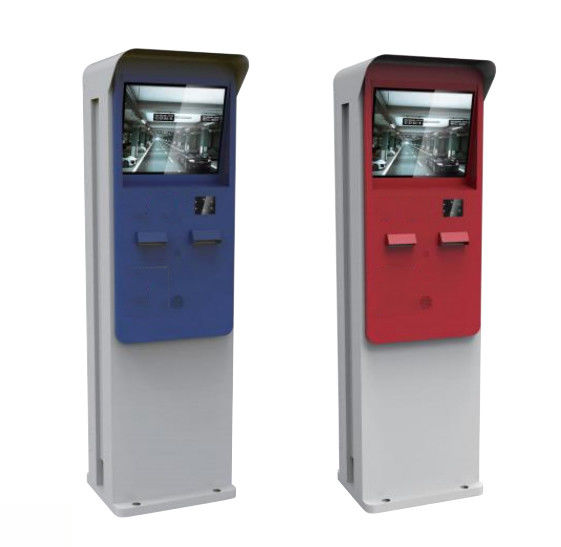

Implementing self-ordering kiosks in restaurants can effectively save human resources in several ways:
1. Reduced Order Taking Staff : By allowing customers to place orders independently through kiosks, restaurants can reduce the number of front-of-house staff needed solely for order taking. This frees up employees to focus on other critical tasks such as food preparation, customer service, and maintaining dining area cleanliness.
2. Increased Operational Efficiency : Self-ordering kiosks streamline the ordering process, enabling faster transaction times and reducing wait times for customers. This efficiency improvement allows restaurants to handle higher volumes of orders during peak hours without the need for additional staff.
3. Consistent Service Standards : Kiosks ensure consistent order accuracy and service quality, regardless of staff availability or experience level. This reduces errors in order taking and enhances overall customer satisfaction by providing reliable service.
4. Enhanced Customer Interaction : With fewer staff dedicated to order taking, restaurant employees can focus more on engaging with customers, providing personalized recommendations, and ensuring a positive dining experience. This personal touch can lead to increased customer loyalty and repeat business.
5. Cost Savings : Over time, reducing reliance on manual order taking can result in significant cost savings for restaurants, including labor costs associated with hiring and training order takers. This allows businesses to allocate resources more efficiently and invest in other areas of operations or expansion.
6. Scalability : Self-ordering kiosks offer scalability benefits, allowing restaurants to easily adjust to fluctuating customer traffic and demand. Additional kiosks can be deployed during peak periods to handle increased order volumes, minimizing the need for temporary staff hires.
7. Cross-Training Opportunities : With fewer staff dedicated to order taking, there may be opportunities to cross-train employees in various roles within the restaurant, such as food preparation, customer service, or back-of-house operations. This enhances workforce flexibility and operational resilience.
8. Reduced Turnover : Simplifying the order taking process with self-service kiosks can contribute to improved employee satisfaction and reduced turnover rates. Employees can focus on more engaging and rewarding tasks, leading to higher job satisfaction and retention.
By leveraging self-ordering kiosks, restaurants can optimize their operational efficiency, enhance customer satisfaction, and achieve significant cost savings while effectively managing human resources to drive overall business success.
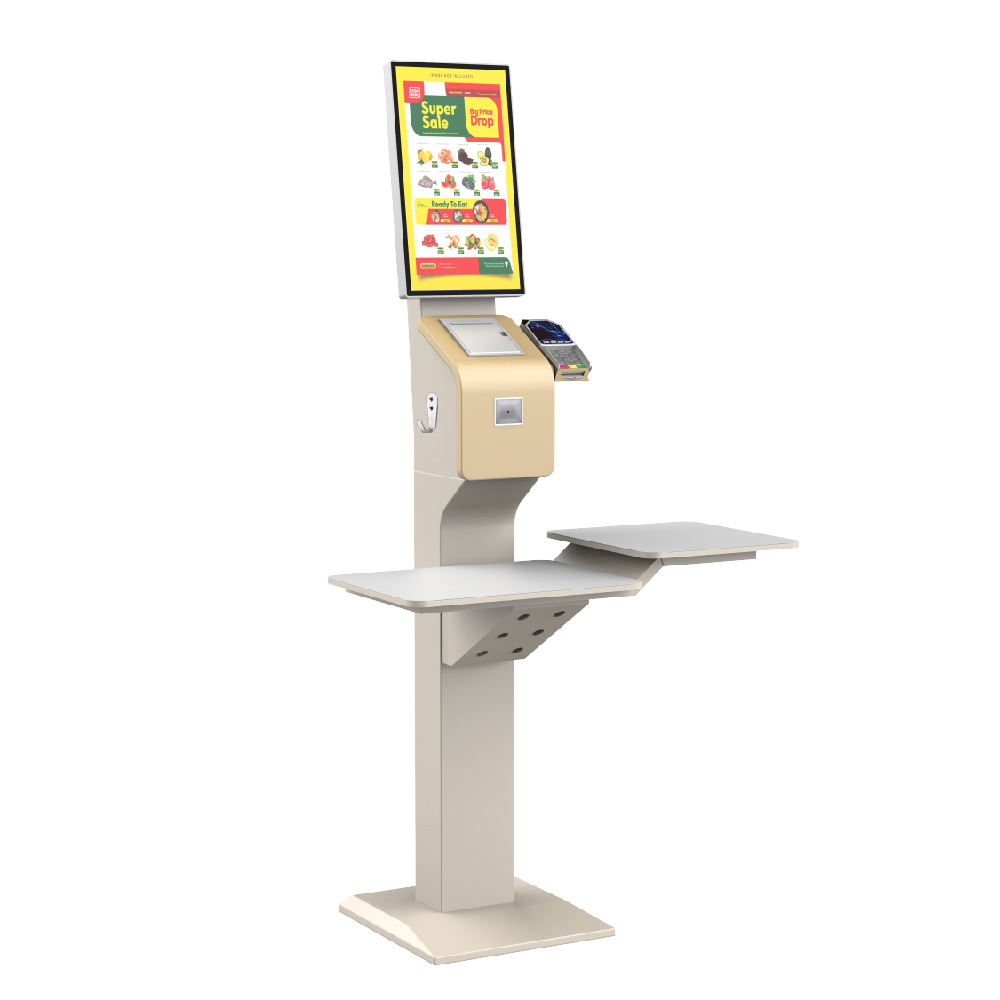
Optimizing space utilization of self-ordering kiosks in restaurants is crucial to maximize efficiency, improve customer flow, and enhance overall dining experience. Here are several strategies to achieve this:
1. Strategic Placement :
- Entryways and Waiting Areas : Position kiosks near entry points or waiting areas to capture customer orders as they enter or wait to be seated. This optimizes customer engagement and reduces congestion in dining areas.
- Drive-Thru Lanes : Install kiosks in drive-thru lanes to expedite order taking and streamline the ordering process for customers using the drive-thru service.
2. Compact Design :
- Slim Profile Kiosks : Choose kiosks with a slim profile and compact footprint to minimize space requirements while still providing sufficient screen size and functionality.
- Wall-Mounted Options : Utilize wall-mounted kiosks in narrow or tight spaces to maximize floor space and ensure ease of access for customers.
3. Integrated Design with Furniture :
- Integrated Seating : Incorporate kiosks into seating arrangements, such as booth dividers or communal tables, to blend functionality with dining areas without occupying additional floor space.
- Countertop Integration : Integrate kiosks into existing counters or tabletops to optimize counter space usage while providing convenient access for customers.
4. Multi-Functional Use :
- Dual-Purpose Stations : Designate kiosks for dual functions, such as order taking and payment processing, to consolidate tasks and minimize the number of kiosks needed in a given area.
- Self-Service Stations : Implement versatile kiosks that can handle multiple functions, such as food ordering, beverage dispensing, or promotional displays, to maximize utility in various service contexts.
5. Queue Management :
- Organized Queue Areas : Arrange kiosks in a designated queueing area with clear signage and pathways to optimize customer flow and prevent congestion during peak hours.
- Mobile Integration : Offer mobile ordering options integrated with kiosk systems to facilitate order placement before customers arrive, reducing wait times and optimizing in-store traffic.
6. Modular and Scalable Solutions :
- Modular Configurations : Opt for modular kiosk setups that can be easily expanded or reconfigured based on changing operational needs and customer traffic patterns.
- Scalable Deployment : Scale kiosk deployment according to peak times or customer demand, adjusting the number and placement of kiosks to maintain efficiency and service quality.
7. Technology Integration :
- Digital Signage : Combine kiosks with digital signage or menu boards to promote specials, updates, and brand messaging, optimizing space utilization while enhancing customer engagement.
- Cloud-Based Management : Utilize cloud-based kiosk management systems to remotely monitor and adjust kiosk operations, ensuring efficient use of space and resources across multiple locations.
By implementing these strategies, restaurants can effectively optimize space utilization with self-ordering kiosks, improving operational efficiency, enhancing customer experience, and maximizing the benefits of self-service technology in their dining environments.
1. Language Selection Options : Provide a language selection feature at the beginning of the kiosk interaction. Allow customers to choose their preferred language from a list of available options, ensuring that the kiosk interface and instructions are displayed in the selected language throughout the ordering process.
2. Localized Content : Adapt menu items, descriptions, and instructions into multiple languages to ensure clarity and ease of understanding for non-native speakers. Translate not only textual information but also graphical elements and navigation prompts to facilitate intuitive usage.
3. User-Friendly Interface : Design a clear and intuitive user interface that accommodates different languages without compromising usability. Use universally recognized icons and symbols where possible to facilitate navigation for customers of various linguistic backgrounds.
4. Text and Audio Options : Incorporate both text-based and audio-based language support to cater to different preferences and accessibility needs. Provide audio prompts or instructions in multiple languages for customers who may prefer auditory guidance.
5. Keyboard and Input Methods : Adjust keyboard layouts or input methods to support languages with unique characters or alphabets. Ensure that customers can input information accurately and efficiently, regardless of their language preferences.
6. Automatic Language Detection : Implement features that automatically detect the preferred language based on customer profiles, location settings, or previous interactions. This can streamline the ordering process and enhance user convenience.
7. Accessibility Considerations : Ensure that multi-language support complies with accessibility standards, such as providing options for adjusting font sizes, contrast levels, and audio outputs for users with visual or hearing impairments.
8. Maintenance and Updates : Regularly update language options and translations to reflect changes in menu offerings, promotions, or seasonal items. Ensure consistency and accuracy across all supported languages to maintain a positive user experience.
9. Training and Support : Train restaurant staff to assist customers with language-related queries or issues at the kiosk. Provide clear signage and on-screen instructions for selecting languages and troubleshooting language-specific challenges.
10. Feedback and Continuous Improvement : Solicit feedback from customers on the effectiveness of multi-language support. Use analytics and user feedback to identify areas for improvement and refine language options based on customer preferences and usage patterns.
By implementing robust multi-language support for self-ordering kiosks, restaurants can enhance inclusivity, accessibility, and customer satisfaction, catering to a broader audience and facilitating seamless self-service experiences for all patrons.
1. Multiple Payment Options : Offer a variety of payment methods such as credit/debit cards, mobile payments ), digital wallets (e.g., Apple Pay, Google Pay), and cash. Providing diverse payment choices accommodates customer preferences and expedites transactions.
2. Contact-less Payments : Facilitate contact-less payment methods to minimize physical contact and speed up the transaction process. Support technologies like NFC-enabled payments or QR codes for quick and convenient payments.
3. Integrated Payment Systems : Integrate the kiosk with a robust and reliable payment processing system that ensures secure transactions and real-time authorization. This integration streamlines the payment flow and reduces transaction time.
4. Quick Response Times : Optimize the kiosk software and hardware to deliver fast response times during the payment process. This includes minimizing loading times, processing payment requests swiftly, and providing instant confirmation to customers.
5. User-Friendly Interface : Design a clear and intuitive payment interface that guides customers through the payment steps seamlessly. Use simple instructions, visual cues, and feedback messages to confirm successful payments promptly.
6. Secure Payment Environment : Implement stringent security measures to protect customer payment information and comply with industry standards. Ensure encryption of data transmission, secure PIN entry, and physical security features on the kiosk.
7. Automated Receipt Printing : Offer the option for customers to print receipts directly from the kiosk after completing their payment. Alternatively, provide digital receipt options via email or SMS for added convenience.
8. Queue Management : Integrate payment processing into the overall order flow to minimize wait times. Ensure that payment terminals are strategically placed to prevent bottlenecks and maintain smooth customer flow.
9. Continuous Monitoring and Maintenance : Regularly monitor kiosk performance and payment processing capabilities to identify and resolve any technical issues promptly. Conduct routine maintenance to keep hardware and software functioning optimally.
10. Training and Support : Train restaurant staff to assist customers with payment-related queries or issues at the kiosk. Provide visible signage or on-screen prompts for troubleshooting steps, and offer customer support contacts for further assistance.
By implementing these strategies, restaurants can optimize payment and transaction processing at self-ordering kiosks, providing customers with a fast, convenient, and secure self-service experience that enhances overall satisfaction and operational efficiency.
Address: No. 99-15, Fuan intelligent manufacturing Industrial Park, Dayang Road, Fuhai Street, Baoan District, Shenzhen, China